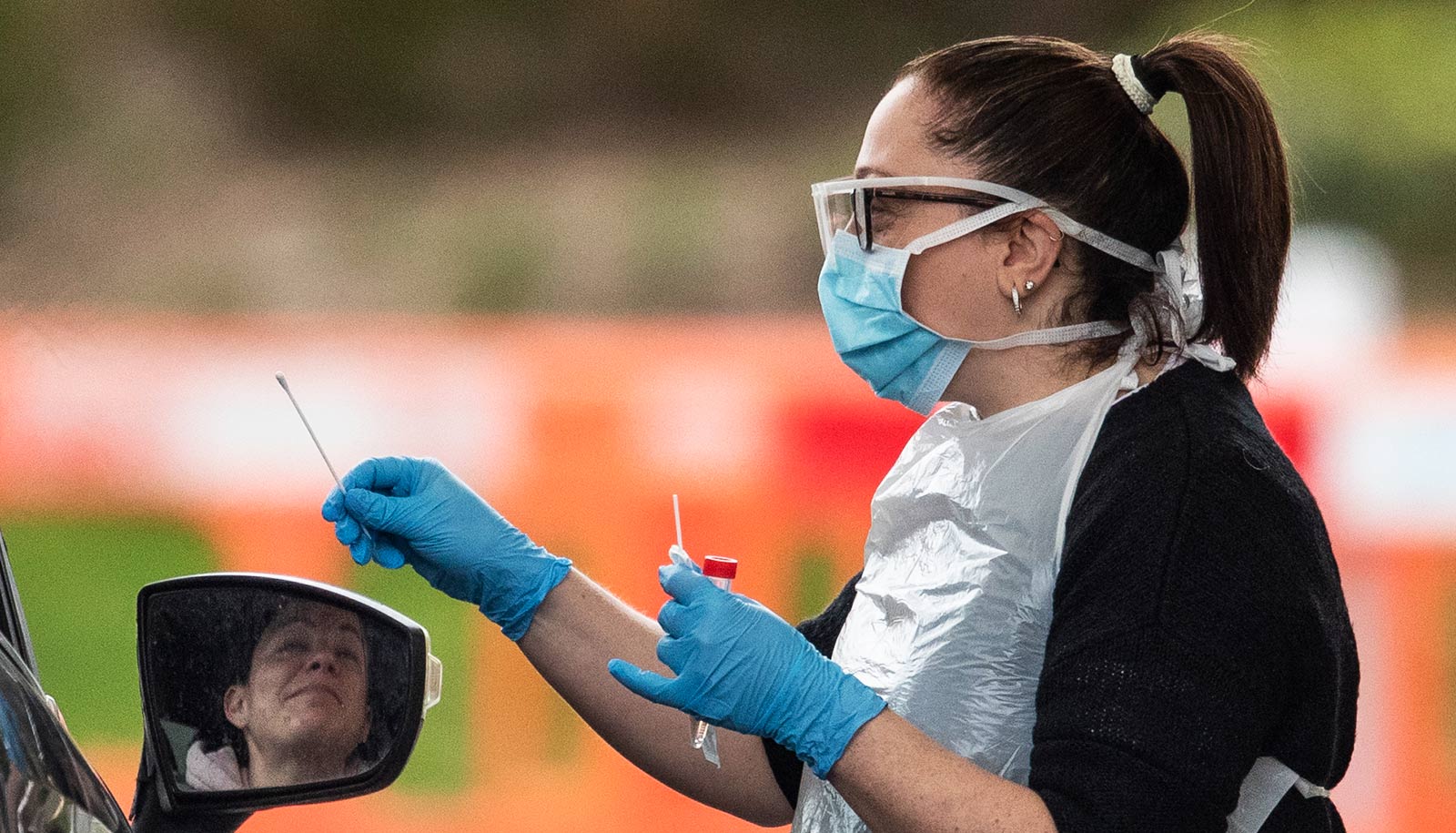A point-of-care platform that uses either nanoparticles or magnetic levitation could diagnose COVID-19 infection and assess future risk, researchers say.
“Such technology would not only be useful in protecting health care centers from becoming overwhelmed, but could also prevent severe shortages of health care resources, minimize death rates, and improve management of future epidemics and pandemics,” says Morteza Mahmoudi, assistant professor in the radiology department in the Precision Health Program at Michigan State University’s College of Human Medicine.
The concept is based on the varying levels of infection and stages of disease which alter the composition of biological fluids such as tears, saliva, urine, and plasma. Different infections and diseases create different patterns specific to the viral load and disease stage, somewhat akin to a fingerprint.
Mahmoudi says that being able to identify and catalog those patterns would be key to any breakthrough in diagnostic technology.
To begin, a patient’s biological fluid is introduced to a small collection of nanoparticles less than one-thousandth the diameter of a human hair. The unique surface of the particle collects proteins, lipids, and other molecules from the fluids in a pattern that Mahmoudi refers to as a biomolecular corona, or crown.
“By analyzing the composition of the crowns at the surface of tiny particles together with statistical approaches, the platform may provide a ‘fingerprint’ pattern for patients who may be at a death risk after being infected by COVID-19,” Mahmoudi says.
The key to these two novel diagnostic platforms is their simplicity, which allows for the deployment of on-site devices where patients are cared for. And because the necessary patient samples are easily obtainable bodily fluids, expert medical professionals would not be required to administer the test.
To make use of patterns identified as reliable “fingerprints,” Mahmoudi suggests that the device house a suite of small sensor technologies—such as an “optoelectronic nose”—capable of imaging the test results and producing a diagnosis.
“The proposed platform could yield a sensitive, easy-to-use optical system to accurately identify COVID-19 infected patients at high risk of death,” he says.
Mahmoudi also proposed another technology based on a recent breakthrough in nanoparticle-based magnetic levitation, or MagLev for short. The innovative method suspends patient plasma samples in a solution of magnetic nanoparticles. Over time, distinct bands of proteins form, separating by density. Much like the protein crown, these uniquely shaped bands of proteins create distinct and reliable patterns useful for fingerprinting disease and stages of infection.
Mahmoudi found that, “MagLev optic images of levitated proteins, subjected to machine-learning analysis, offer valuable information on the individual’s health status.”
He is confident in the diagnostic capabilities of the technology for patients at high risk of death from COVID-19.
This paper appears in Molecular Pharmaceutics.
Source: Michigan State University



